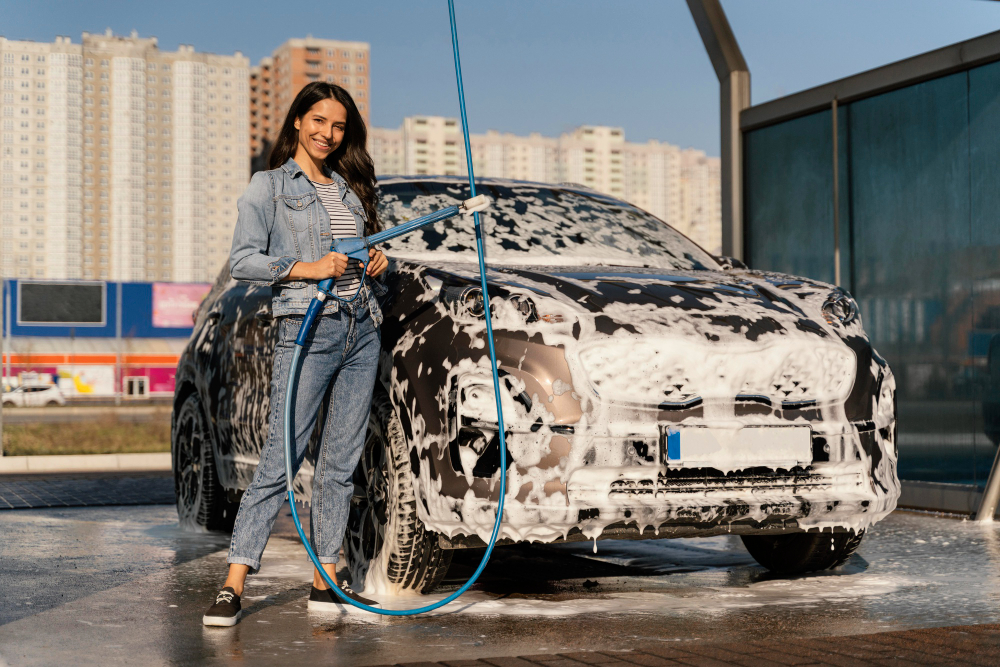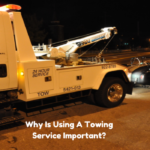Maintaining the appearance of your car is crucial not only for its aesthetics but also for its longevity. If you’re based in Calgary, where the climate can be unpredictable, car washing and maintenance should be high on your priority list. But after a thorough car wash, the common question arises: Do you need to wax your car after washing? In this blog, we’ll delve into the importance of car waxing, especially after washing, and provide you with expert tips to protect your vehicle in Calgary’s unique weather conditions.
1. Introduction to Car Washing and Waxing
Car washing is a routine part of vehicle maintenance that removes dirt, grime, and contaminants from the surface of your vehicle. However, washing alone doesn’t fully protect the car’s paint job. Waxing your car after washing creates a protective barrier that can extend the life of the paint, enhance shine, and guard against environmental damage.
2. Understanding the Calgary Climate: Its Impact on Your Car
Calgary experiences a wide range of weather conditions, from snow and ice in the winter to scorching sun in the summer. These elements can severely impact the exterior of your car if it’s not properly protected.
- Winter: Snow, ice, and road salt are common in Calgary winters, and they can be highly corrosive to your vehicle’s paint. Salt can create small cracks in the paint, which may lead to rust over time.
- Summer: The sun’s UV rays can cause oxidation, fading, and dullness in your car’s paint, making it look older and worn out.
This constant exposure to both moisture and UV radiation makes it essential to protect your car beyond just washing.
3. What Happens When You Only Wash Your Car?
Washing your car removes surface dirt and grime, but it doesn’t provide any long-term protection. Calgary’s harsh environmental factors can begin to erode the paint job once your car is exposed again. Without a protective layer, pollutants, bird droppings, and even rainwater can create blemishes and permanent damage.
Here’s what happens when you don’t wax after washing:
- Your car is more prone to scratches and swirl marks.
- The paint may lose its original gloss and depth.
- Contaminants from the road can penetrate the paint more easily.
For Calgary residents, washing without waxing could be a recipe for faster wear and tear.
4. Why Waxing Is Essential After Car Washing
Waxing serves as a protective barrier between your car’s paint and the environment. After a wash, the surface of your car is clean, but it’s also exposed. Waxing seals in the cleanliness and adds a smooth layer that repels water, dust, and dirt. This is crucial, especially in Calgary, where dust storms and fluctuating temperatures can cause rapid buildup of dirt or even ice.
Here are some key benefits of waxing your car after washing:
- UV Protection: A good wax can block harmful UV rays, preventing your car’s paint from fading.
- Water Beading: Wax causes water to bead up and roll off the surface, reducing the likelihood of water spots forming.
- Smooth Finish: Waxing creates a smooth finish, which helps in repelling dirt and grime, making future washes easier.
5. How Waxing Protects Your Car
Car wax acts as a sacrificial layer between your car’s paint and the harmful elements it faces daily. Here’s a breakdown of how waxing offers protection:
- Prevents Oxidation: Without protection, Calgary’s intense sunlight can oxidize your car’s paint. Waxing prevents this by blocking UV rays.
- Protection Against Corrosion: Calgary’s winters often involve road salt, which can corrode unprotected metal. Waxing creates a seal that keeps salt and moisture away from the car’s surface.
- Repels Contaminants: Wax minimizes the sticking power of pollutants like tar, bird droppings, and tree sap. It makes it easier to clean the car in the future, preventing permanent damage.
6. The Best Time to Wax Your Car in Calgary
Ideally, you should wax your car right after a wash, while the surface is clean. However, weather conditions should also be considered. Calgary’s climate can shift rapidly, so it’s best to wax during mild temperatures—preferably in spring and fall—when the weather is not too hot or too cold. Waxing in direct sunlight or extremely low temperatures can affect the finish and effectiveness of the wax.
7. Different Types of Car Wax: Which One to Choose?
There are various types of car wax available, and selecting the right one can be confusing. Here are the main categories:
- Natural Wax (Carnauba Wax): This is a popular choice for its deep shine and warm glow. However, it doesn’t last as long as synthetic options and may need more frequent applications, especially in Calgary’s harsh winters.
- Synthetic Wax: Known for its durability, synthetic wax is a great choice for those seeking long-lasting protection. It can withstand Calgary’s rough conditions better than natural wax.
- Spray Wax: While convenient for quick application, spray waxes don’t offer the same level of protection as paste or liquid waxes.
If you want a balance of shine and durability, a combination of natural and synthetic waxes may be the best option for Calgary’s diverse climate.
8. Steps for Waxing Your Car After Washing
Waxing your car can seem daunting, but with a little patience, it’s a simple process. Follow these steps for the best results:
- Wash Your Car Thoroughly: Remove all dirt and debris to avoid scratches during waxing.
- Dry the Car Completely: Waxing a wet car can result in streaks and uneven application.
- Apply the Wax: Use a clean applicator pad, applying a thin, even coat of wax in a circular motion.
- Allow the Wax to Dry: Most waxes will need to dry to a haze, which usually takes about 5-10 minutes.
- Buff the Wax Off: Use a clean microfiber cloth to buff the wax, revealing a shiny, smooth surface.
Remember, patience is key! Take your time to achieve a flawless finish.
9. How Often Should You Wax Your Car?
How frequently you should wax your car depends on the type of wax you use and the environmental conditions your car faces. In Calgary, given the severe winters and dusty summers, you may want to wax your car every 3-4 months. Synthetic waxes, which last longer, may only need application twice a year, while natural waxes may require more frequent use.
10. DIY vs. Professional Car Waxing in Calgary
If you’re a car enthusiast, waxing your vehicle can be a satisfying DIY project. However, not everyone has the time or equipment to do it properly. Professional car waxing services in Calgary offer an alternative, ensuring the job is done efficiently and with high-quality products. Professionals can also provide additional services like paint correction or ceramic coatings, which offer even more protection than traditional waxing.
11. Common Myths About Car Waxing
There are several misconceptions about car waxing that need to be addressed:
- Myth 1: You can wax your car too often.
Waxing regularly won’t damage your car, though over-application can cause build-up. - Myth 2: Wax can fix scratches.
Waxing can hide minor imperfections, but it won’t repair deep scratches or chips. - Myth 3: Waxing is only for looks.
While it does enhance appearance, waxing’s primary function is protection.
12. Benefits of Waxing Beyond Aesthetic Appeal
While the shine and gloss are obvious benefits, waxing offers more than just cosmetic improvements. Here’s why it’s crucial:
- Protects resale value: A well-maintained exterior boosts the resale value of your car.
- Prevents rust: Waxing can prevent the formation of rust, a common issue in regions like Calgary with high road salt usage.
- Saves money in the long run: By preventing damage to your car’s paint, you can avoid costly repairs.
13. Top Car Washing and Waxing Services in Calgary
If you’re looking for professional care, Calgary boasts several top-notch car washing and waxing services. Some notable mentions include:
- Auto Detailing Calgary
- Shine Factory
- Details Auto Spa
These businesses provide expert-level washing and waxing services that ensure your car is protected against Calgary’s weather extremes.
14. FAQs: Car Waxing and Calgary’s Weather
Q1: Can waxing protect my car from road salt in winter?
Yes, waxing provides a barrier that helps protect your car from the corrosive effects of road salt.
Q2: How often should I wax my car in Calgary?
Wax your car every 3-4 months, or after every season, for optimal protection in Calgary’s changing climate.
Q3: Is there a special type of wax for colder climates?
Synthetic waxes are better suited for colder climates as they last longer and provide more durable protection.
Q4: Can I wax my car in direct sunlight?
It’s best to wax your car in a shaded area or during cooler temperatures to avoid streaks or damage to the paint.
Q5: Does waxing prevent rust?
Yes, waxing can help prevent rust by creating a protective layer that seals out moisture and contaminants.
Q6: Can I use spray wax for the same effect?
Spray waxes provide a quick shine but don’t offer the same level of protection as paste or liquid waxes.
15. Conclusion: Is Waxing Worth the Extra Step After Washing?
In short, yes! Waxing after washing your car is well worth the effort, especially in Calgary, where the weather can be hard on your vehicle. Waxing provides an essential layer of protection that not only enhances the shine of your car but also preserves its paint and prevents long-term damage. Regular waxing will keep your car looking great and running longer, saving you money in the long run. So, the next time you wash your car, don’t skip the wax – your car will thank you!



